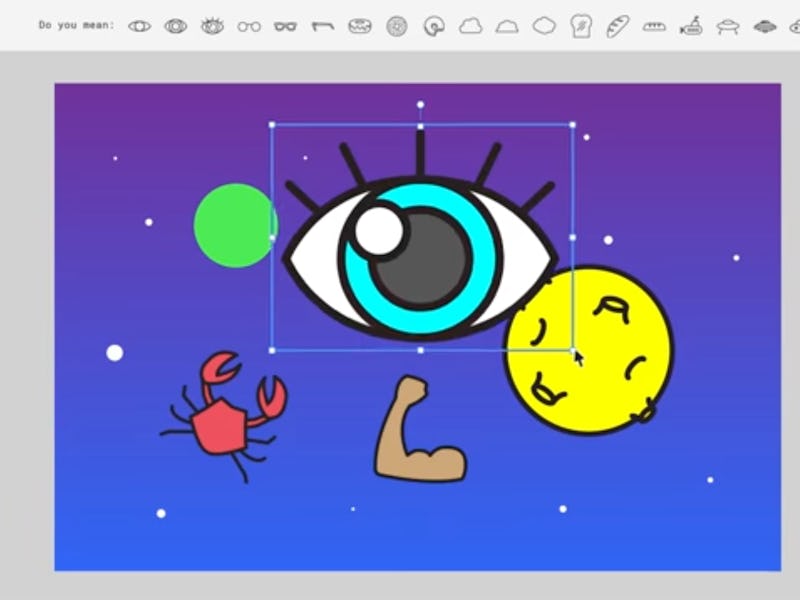
Google released a new tool, or perhaps experiment last week, that uses an A.I. to watch what users draw in a simple paint program, and then tries to suggest how it could make doodles that look less terrible. While it may look like a buggy and largely useless little experiment, it has big implications for a future in which computers can mimic a rudimentary level of artistic talent (which could be bad news for DeviantArt).
The program works by watching the artist’s strokes and comparing against a database of preexisting, non-terrible-looking doodles of basic objects like cats, buildings, computers, and more. Google is billing it as a means to quickly produce graphics on your smartphone — though most smart-phone users don’t need any help generating long strings of emoticons and gifs in short periods of time. Autodraw is essentially a gestural interface for searching a collection of simple drawings, which is fun, but probably not likely to explode in terms of popularity.
AutoDraw is based on the data from a prior Google doodling experiment, Quick, Draw!, which gets internet drawers to sketch many simple objects as quickly as possible. The idea is both that the speed will increase the number of doodles Google can then feed to the A.I. for analysis, and that the frantic nature of the drawing will lead people to draw only those lines that were vital to creating a recognizable picture. Thus, those would be the lines an A.I. would later want to look for, to do the quickest possible doodle-identification.
The system is definitely better at some objects, than others. Below, it offered to turn my demonic cat face into either a normal cat face or a cat silhouette, showing that its object-finding has at least some conceptual grouping of pictures, beyond shape similarity. On the other hand, it also thought my Empire State Building was a piece of pizza.
Google does seem to have an odd obsession with applying the power of machine learning to art. Not only does Google maintain a number of tutorials and other programs to help artists start using machine learning in a variety of ways, it’s also got a machine learning art accelerator of sorts. The assumption seems to be that artists, though less sophisticated in mathematics and pure code, might just be the people to devise the next revolutionary application for artificial intelligence. It might seem frivolous, but these more wide-open applications of machine learning to unfiltered human output could be the source of more unexpected leaps forward for A.I. than some pure efficiency-maximizing algorithm.